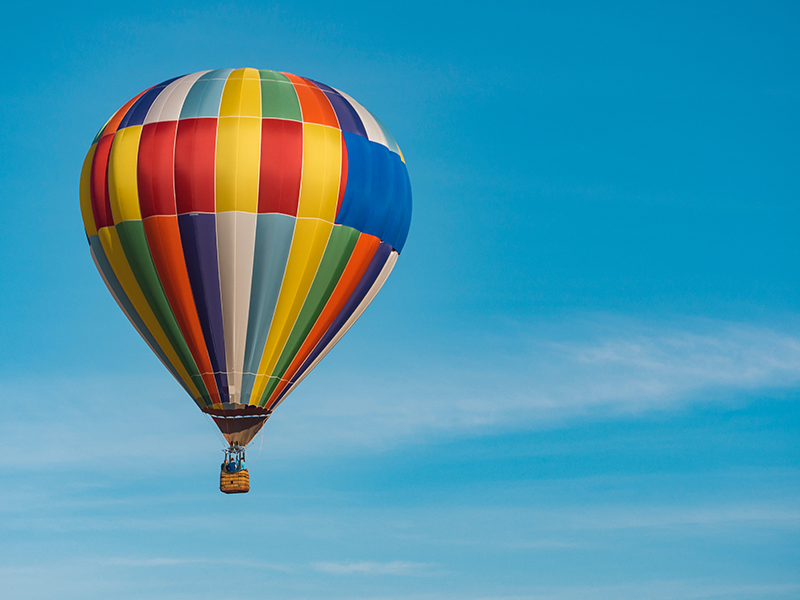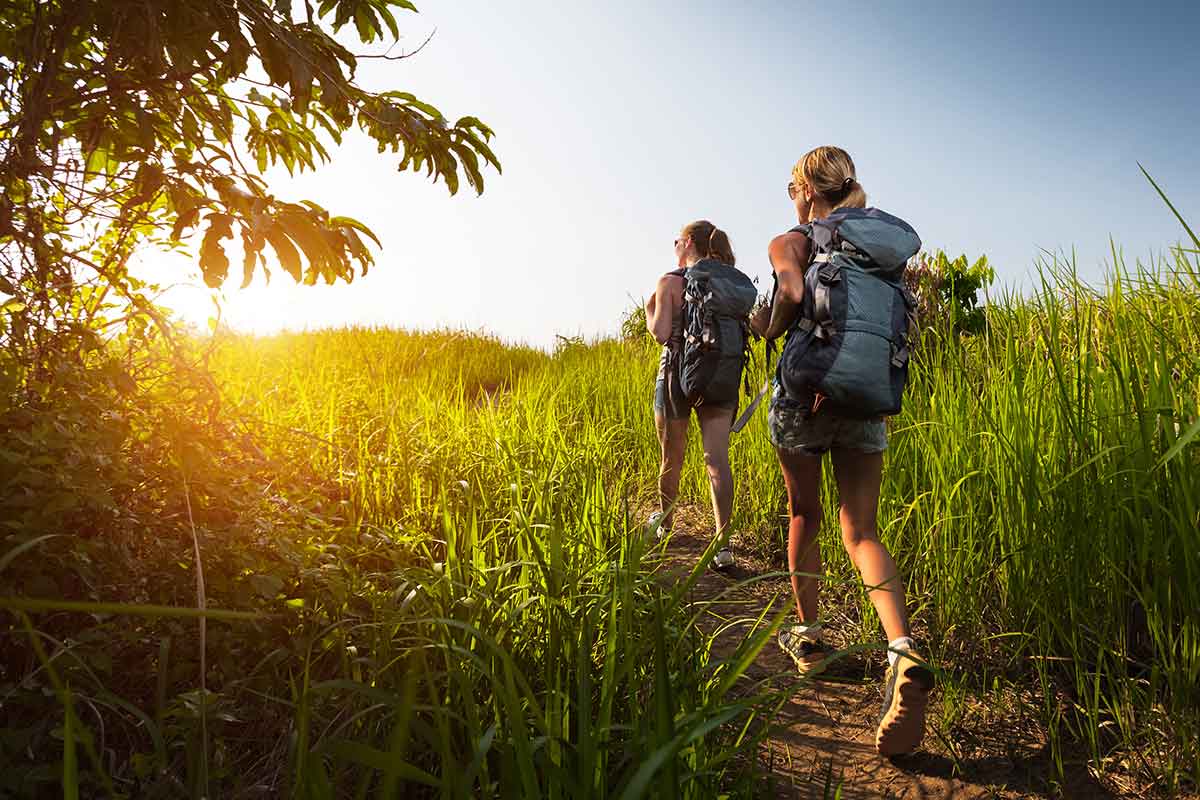Greg and Danita Wood, owners of Missouri Life magazine, take a once in a lifetime horseback riding adventure out West. They headed to the mountains of Wyoming and a horse-riding adventure on the Bitterroot—a working cattle ranch that is nested at 7,200 feet in the Absaroka Mountains.
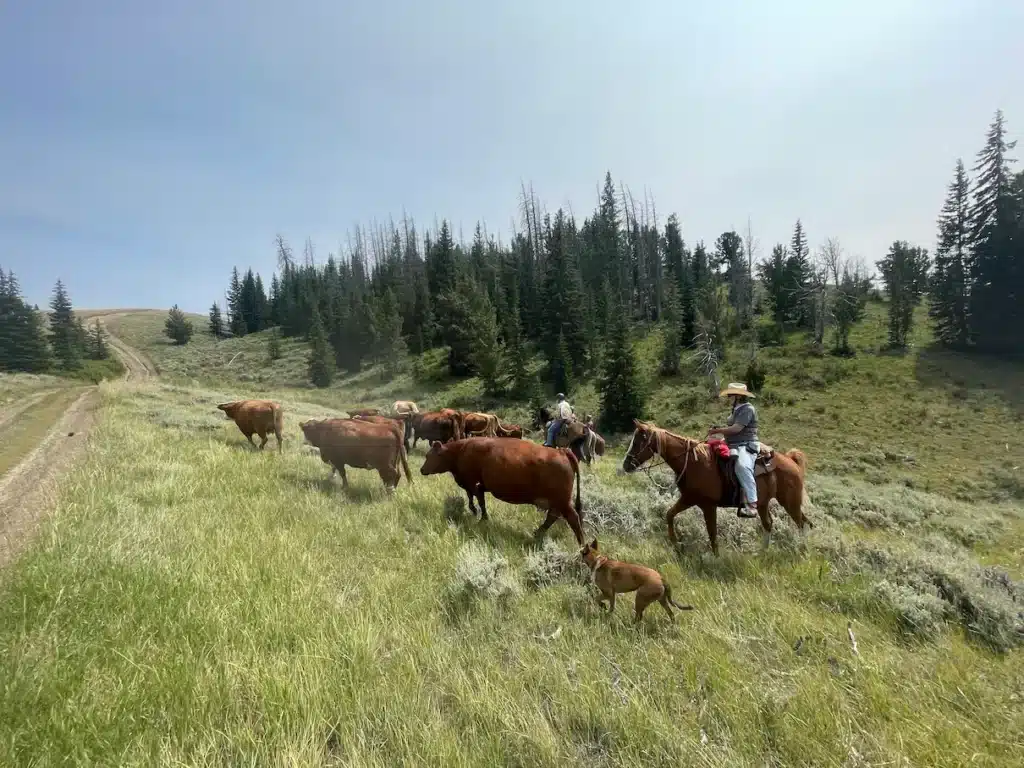
Article and photos by Greg Wood
We know Missourians love to travel; it is embedded in our state’s cultural history. Just look at all the trails west that began in Missouri. It started with Lewis and Clark, then came the Boonslick, the Santa Fe, the Oregon, and the California Trails. I believe that sense of adventure that drove those early settlers and pioneers, especially when headed west, is part of our very souls. I know that it often calls Danita and me. We have toured and climbed, biked, hiked, and ridden horses all over the west and we still can’t get enough of it, although we love riding in our Missouri Ozarks just as well. So why do we travel west? I can’t really say why. I think it may be because of the peace and calm we get from the wide-open spaces and the sky that seems to go on forever.
So, when we got the itch to travel last summer, we decided to head north and west to the Black Hills of South Dakota by traveling through the Sandhills of northwest Nebraska then straight north to the Badlands. I had never been in these parts before, although Danita had, including visiting Mount Rushmore. We spent a week roaming around those areas, including a visit to Custer State Park.
With our appropriately named Lakota horse trailer in tow (that has nice living quarters including kitchen, toilet, shower, fridge, A/C, and bed) we stayed mostly in National Forest and Park campgrounds. We called it our tiny home on wheels. And instead of horses in the back, we had our bicycles and gear that we would need when we got to Wyoming to ride the ranch horses on the Bitterroot Ranch in the Absaroka Mountains, just east of Yellowstone.

After a wonderful eight days in South Dakota, we headed to the mountains of Wyoming and a horse-riding adventure on the Bitterroot—a working cattle ranch nested at 7,200 feet in the Absaroka Mountains. I say nested because the next four days and four nights we would be above 9,000 feet and riding at nearly 11,000 feet.
I was glad we had time to acclimate in South Dakota. Fact is, I was a little worried about spending four full days and nights at that higher elevation. But we kept to the ground rules: take it slow, drink plenty of water, use lots of sunscreen, and keep the alcohol consumption to about one glass of wine per day. And speaking of wine, it was included with the meals that our hosts and trail bosses, Ross Marine and Gabby Yates, served. They cooked every meal over a campfire. Some meals were initially prepared by the head chef down at ranch headquarters, where many more equestrians and fly fishers were lodging and eating their meals buffet-style three times a day, but even so, heating up gourmet food is no easy job over an open campfire. Every meal was fantastic, but I particularly liked the breakfasts, which were all fixed from scratch by Gabby and Ross.
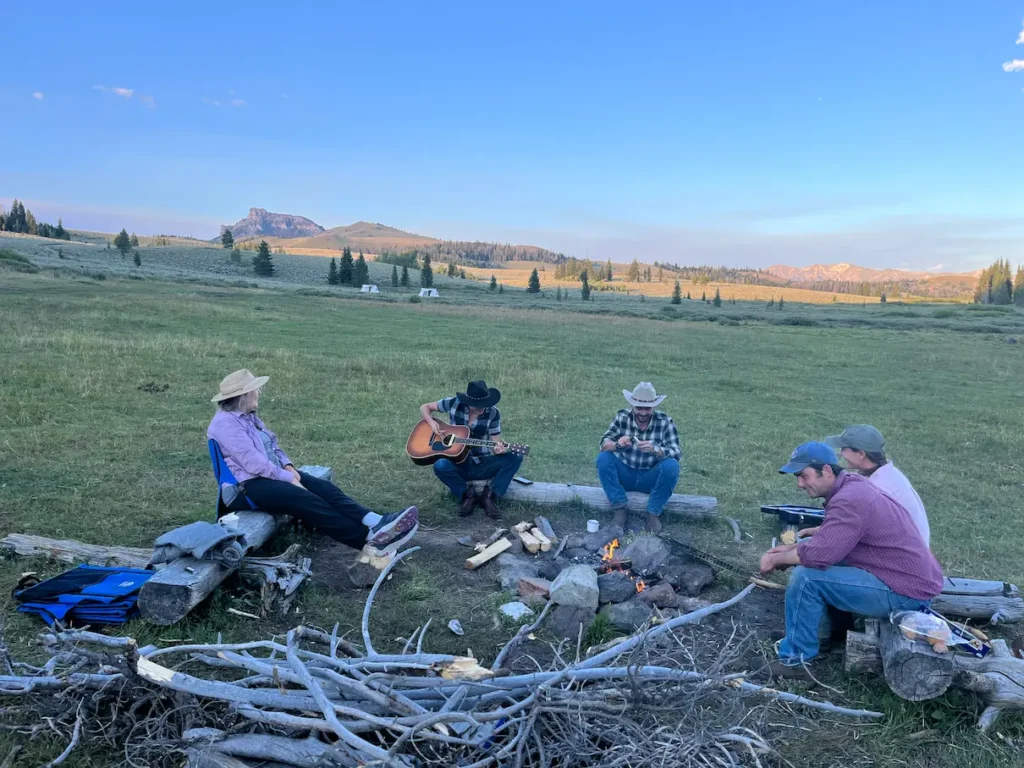
Bitterroot Ranch has an amazing back story and can almost be summed up by the title of the autobiography of its 93-year-old owner and patriarch Bayard Kane Fox: Fisherman, Rancher, Horseman, Spy. It’s all true, including the spy part, as he worked in that capacity for the CIA for 12 years. I was glad to be able to read his book before we got to the ranch. It gave me a lot of background and appreciation for what it took and still takes to make an operation like this successful. We immediately felt at home at Bitterroot and found out their head chef is from the Kansas City area. Ross, our guide, is a MIZZOU grad and grew up near Kansas City. He even buys many of his horses from a horse trader near Maryville, Missouri.
The “Horseman” part of the book is also very real. The Fox family, including Bayard’s wife, Mel, their son Richard and his wife, Hadley, raise their own Arabians from select bloodlines and currently have around 65 head and about 140 total head of horses. They never sell what they raise as they need them all for various aspects of running the ranch. They are used to work cattle, and many are used in the various training programs that attract folks from all over the world.
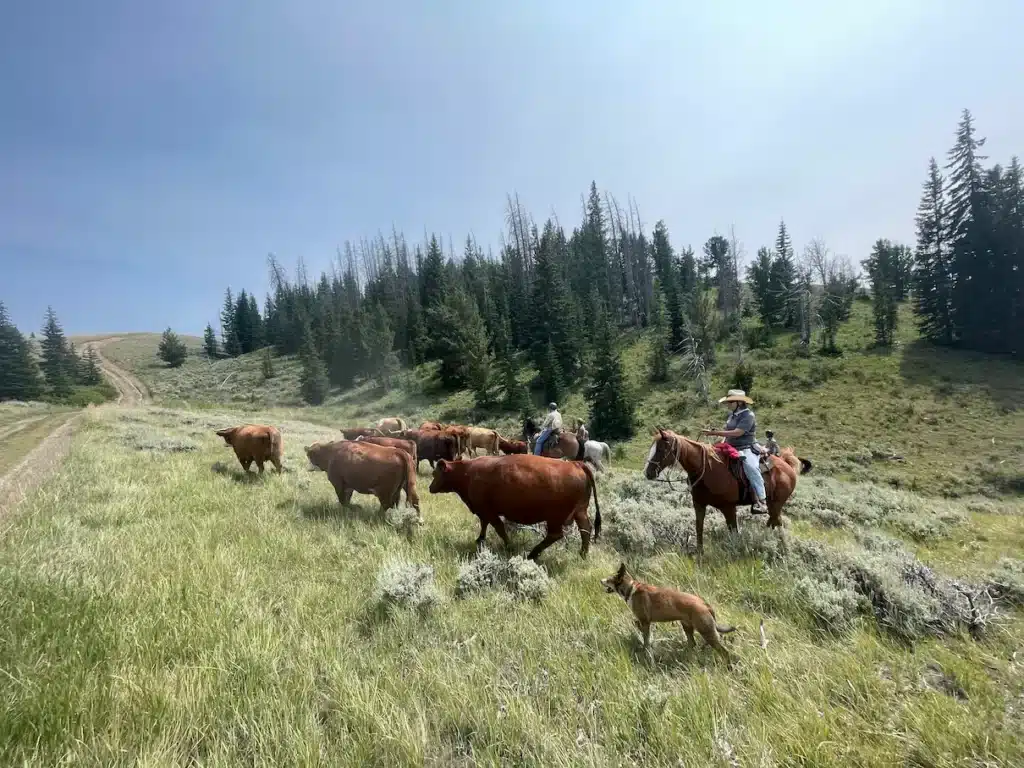
In fact, back in the 1970s, before the ranch even had a phone, they were a guest “dude” ranch with mostly French men and women as guests—acquaintances from Bayard’s CIA days. This, combined with Mel’s childhood adventures on horseback next to Africa’s Nairobi National Park, led them to create a worldwide equestrian program called “Equitours.”
This adventure travel company offers horse-riding experiences in dozens of countries around the world. Bayard started the company in 1971 and headquartered it from his ranch. He later moved it to the nearest town of Dubois, Wyoming, about 26 miles from the ranch (most of those miles on gravel roads). Daughter-in-law Hadley handles bookings and employment for the ranch and represents Equitours at marketing events in the off-season. Her husband, Richard, runs the ranch alongside Hadley, who rides every day all summer and is extremely involved in the day-to-day workings of the ranch.
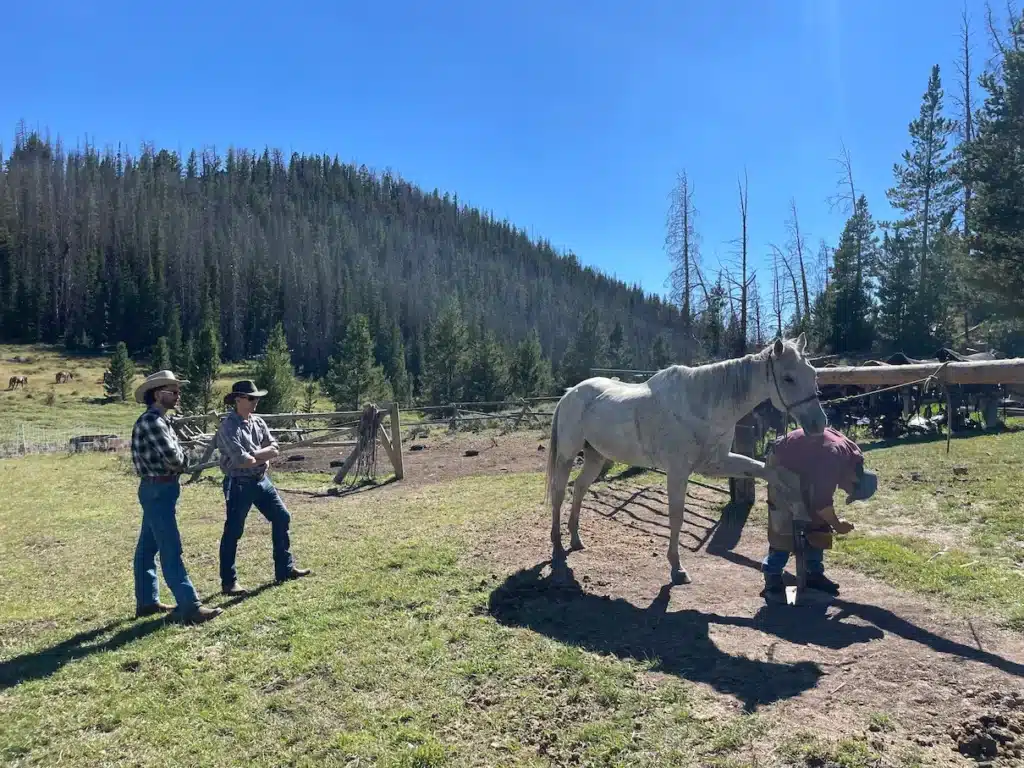
But back to our very real adventure at and around “Cowboy Camp,” about a five-hour ride from the main ranch. There is one road into camp that is only open during the summer, the road we would be taking via a tightly packed Suburban on our fifth day. Our travel companions were three chaps from England: Ben (father) and two sons, Charlie and Tommy. They were very enjoyable and we shared many stories and adventures.
We were expecting to do real real ranch stuff, like chasing cows, checking fences, and keeping an eye out for any livestock killed by wolves or bears. These were somewhat rare, but Ross had just seen a grizzly and two cubs near our camp the day before we got there. So, we were all keeping an eye out for sure. Bayard had told us over wine and dinner the night before our adventure began, that if we found any “kills,” we would be taking parts of the carcass back with us since they got compensated for any livestock lost to wolves or bears.
Alas, we did not see any of either critter or fresh kills, but we did find a small herd of cattle that needed to be taken off the pasture where they had strayed and moved to another pasture several miles away. This was a real treat as Danita and I had grown up rounding up and driving cattle on our families’ farms in Missouri. Ross and Gabby were glad we had some experience as the previous “green horn” crew was not able to bring the herd back to where they needed to go. Yee Haw!
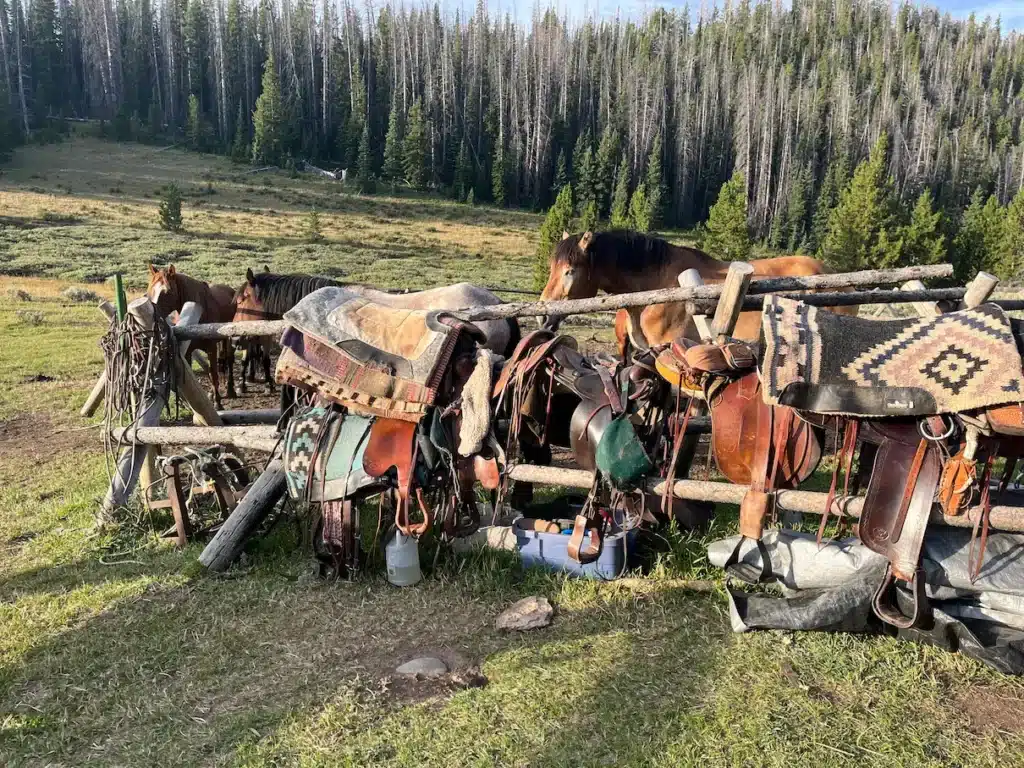
Our horses were mostly Quarter Horse crosses and were experienced around cattle and accustomed to climbing mountains in thin air. Danita and I were also glad to be riding in our own saddles, as I was one year removed from one hip replacement and a month before the second, I greatly appreciate my Big Horn trail saddle with extra cushioning in the seat. Danita’s Australian saddle keeps her knees from aching as some western saddles can be hard on knees. Good saddles, like ours and Ross’s, hold you firmly in place if a horse shies from something. Ross’s horses were the most gentle and easygoing that I’ve been on for awhile. He spends countless hours training and riding them before any guest ever gets on one.
After a hearty supper, we sat around the campfire. I brought my guitar and as it turned out, 17-year-old Tommy was quite a guitar player and singer. After some tunes, s’mores, and stories told by all, we’d traipse off to our wall tents about a quarter mile from the main camp area with the old cabin, mess tent, corral, and campfire. We had no running water, no electricity, and no cell service. There was an outhouse parked way above the campground amid rocks and downed pine trees. To get up to it at this altitude seemed like we were climbing Mt. Everest. I was making my way up the rugged climb when I heard a loud banging up at the outhouse. I was a bit startled, then I heard someone yelling from inside the tiny building. It was Ross and he had somehow gotten himself locked in. Before I could get up there, he gave the door a big kick and it swung open.
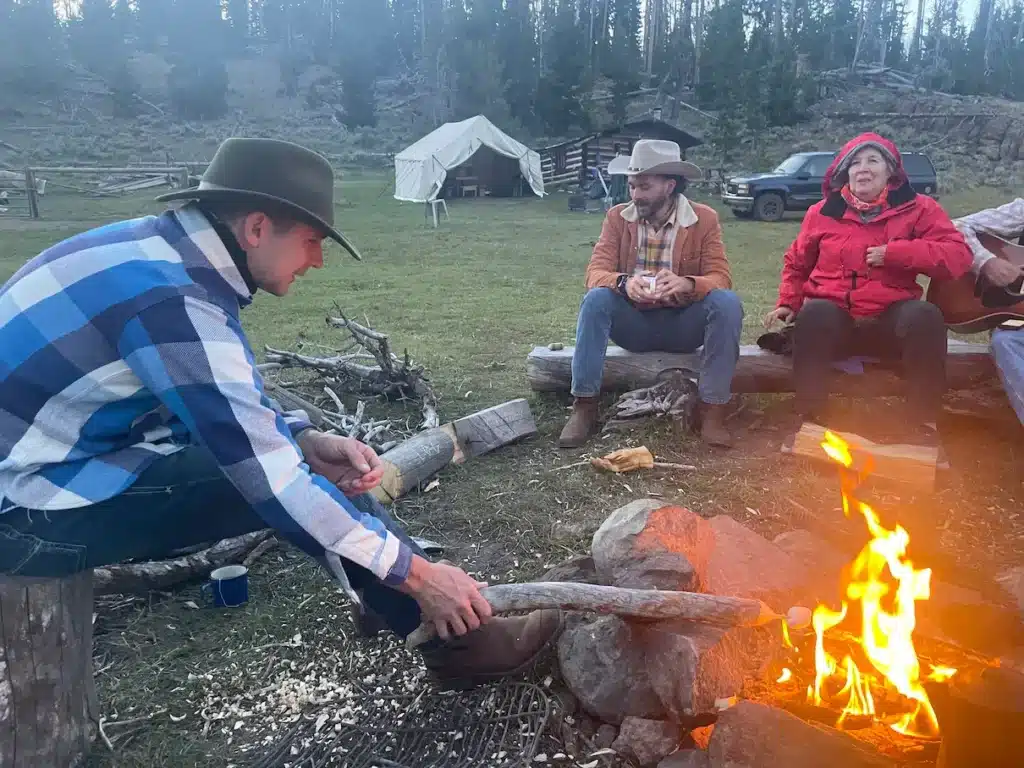
We actually did have running water in the form of a spring-fed mountain creek. This is where we washed dishes and ourselves if we had the courage to brave 40-something degree water. We did, in fact, try it, but we were a long way from total immersion. After four days in the saddle and no showers, we kind of needed one. But I think having those four days with relatively no connection to the outside world was akin to detoxing. It forced us to unplug from everything—and that included plumbing.
After fond farewells to our hosts and travel companions we headed to hot showers at our campground in the Grand Teton National Park about 60 miles to the west, and then on to Yellowstone for a few days. During our tour of Yellowstone, many references were made to the first white man to see this incredible place—Missouri’s own John Colter, who left the Lewis and Clark expedition and ventured into Yellowstone after literally running for his life with no clothes on as he escaped capture by the Crow Indians. When Colter got back to Missouri and described his adventures and what he saw in Yellowstone, no one would believe him.
It’s true that the Old West is full of harrowing adventures and is probably one reason we are all attracted by it. Our three English travel companions at the ranch made me realize how this “sense of adventure” resonates with so many people around the world. It keeps us always on the lookout for the wild and wooly so we can go home and tell stories of wonderful and amazing things we saw or did, like riding horses on a working ranch in the mountains of Wyoming.
Actually, for us Missourians, it’s more than that. The west (which really began in Missouri) calls us because it is part of us. It keeps us humble. It keeps us on our toes. It keeps us always moving, always yearning for more. And we love it.
Related Posts
Hot Air Balloon Adventure
On December 31, 1997, Steve Fossett took off in a hot air balloon from Busch Stadium on this day. The trip ended a few days later in Russia, establishing a new distance record.
Finding Elk at Peck Ranch
See the majestic elk for yourself.
Fuel Your Adventure
Tori Eaton shares how to prepare for your next adventure.

